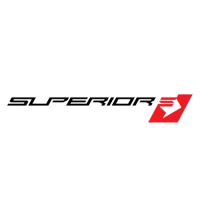Installation & Operation Manual
O-360 and IO-360 Series Engines
7 Chapter 3 • Aircraft / Engine
© March 2004 Superior Air Parts Inc. Integration Considerations
4. ENGINE COOLING
The engine cooling system design can
significantly effect both performance and
longevity of an aircraft engine installation. High
engine temperatures can result in loss of power,
fuel vapor lock, and can promote accelerated
wear and even engine detonation.
A. General Cooling System Design
The Superior Vantage Engine is a horizontally
opposed, air-cooled design. As such, all heat is
removed from the engine either by airflow over
the cylinders and crankcase or through an air-to-
oil lubricant heat exchanger. The horizontally
opposed cylinder arrangement is a space
efficient design that allows maximum cooling
airflow with minimum drag.
In general, air cooling of the engine heads and
crankcase occurs by directed airflow over those
components. Air is commonly received into the
cowl in a plenum above the engine and directed
downward between the cylinder and barrel fins
to a volume within the lower cowl.
The cooling air normally exits the lower cowl
through the exhaust tailpipe exit area. Airflow
over the engine is governed by the pressure
differential between the upper cowl and lower
cowl areas. In high performance installations
cowl flaps may be added to increase the cooling
airflow.
Superior Vantage Engines are provided with
inter-cylinder metal baffles to aid in the control of
cooling airflow over the cylinders and barrels. In
addition, the installation design must include
baffles that attach to the engine and provide a
seal to the interior of the cowl thus creating a
separation between the upper and lower cowl
volumes. This is typically done primarily with
metal components for stiffness against the ram
air pressure with flexible rubber seals to conform
to the contours of the upper cowl and to allow for
relative movement between the engine and
cowl.
The lubricating oil for Superior Vantage Engines
must be cooled by means of an air-to-fluid heat
exchanger. Typically, this heat exchanger is
mounted to the engine mount structure and
fastened to a rear engine baffle(s), open to the
upper plenum and facing the nose of the cowl.
In this way, ram effect of the cooling air entering
the upper plenum can be utilized to increase the
airflow through the heat exchanger.
B. Airside Heat Rejection
Airside heat rejection, that is heat rejected
through the cylinder heads, barrels and
crankcase, etc., is a primary means for cooling
the engine. The resulting temperature of the
engine is in direct proportion to the amount and
quality of cooling air that passes over the
engine. The engine cowl baffles create an upper
plenum, fed by incoming air from the front of the
cowl that in turn provides cooling air between
and around the barrels and cylinder heads as
controlled by the inter-cylinder baffles. The
amount of airflow over the engine is controlled
by the pressure differential between the upper
and lower cowl volumes. Figure 2 of the Model
Specification Data provides detailed information
concerning the mass airflow as a function of
pressure differential over a Superior Vantage
Engine.
Superior Vantage Engines are tested and
calibrated for airside heat rejection on highly
instrumented test stands. Table 4 of the Model
Specification Data defines cooling airflow
requirements as a function of power output.

